
Whether caterpillars are feeding on the leaves or the fruit of your tomatoes, most can agree that they are pests in the garden and need to be controlled.
There are several varieties of caterpillars that will feed on either the leaves or the fruit or worse – both. They are often identified first by the droppings (or rather frass) they leave behind, and then by the damage they cause.
Often caterpillars hide under leaves and only come out at night. Some are also colored green and blend rather well into the plants.
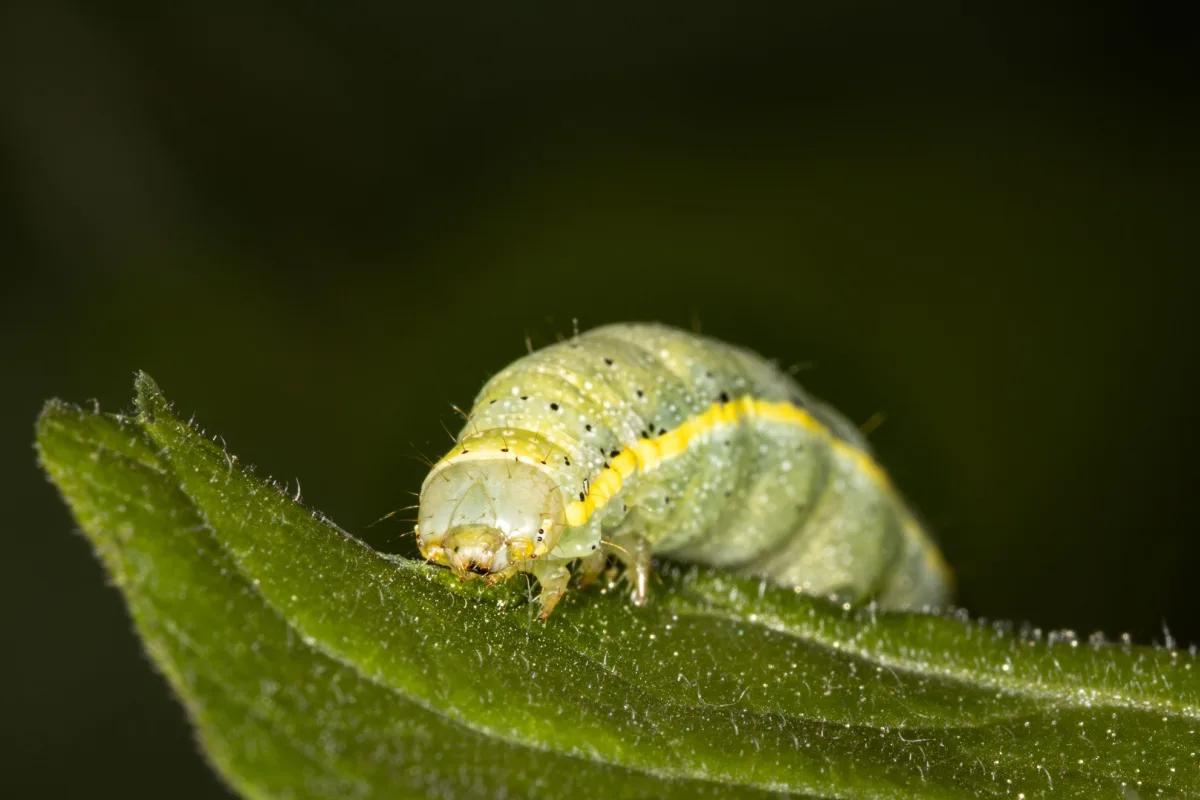
Take note of the color, patterns, shapes and size of any caterpillar you spot. Then use the handy list below to see what they do and how to control them.
1. Tomato Hornworm
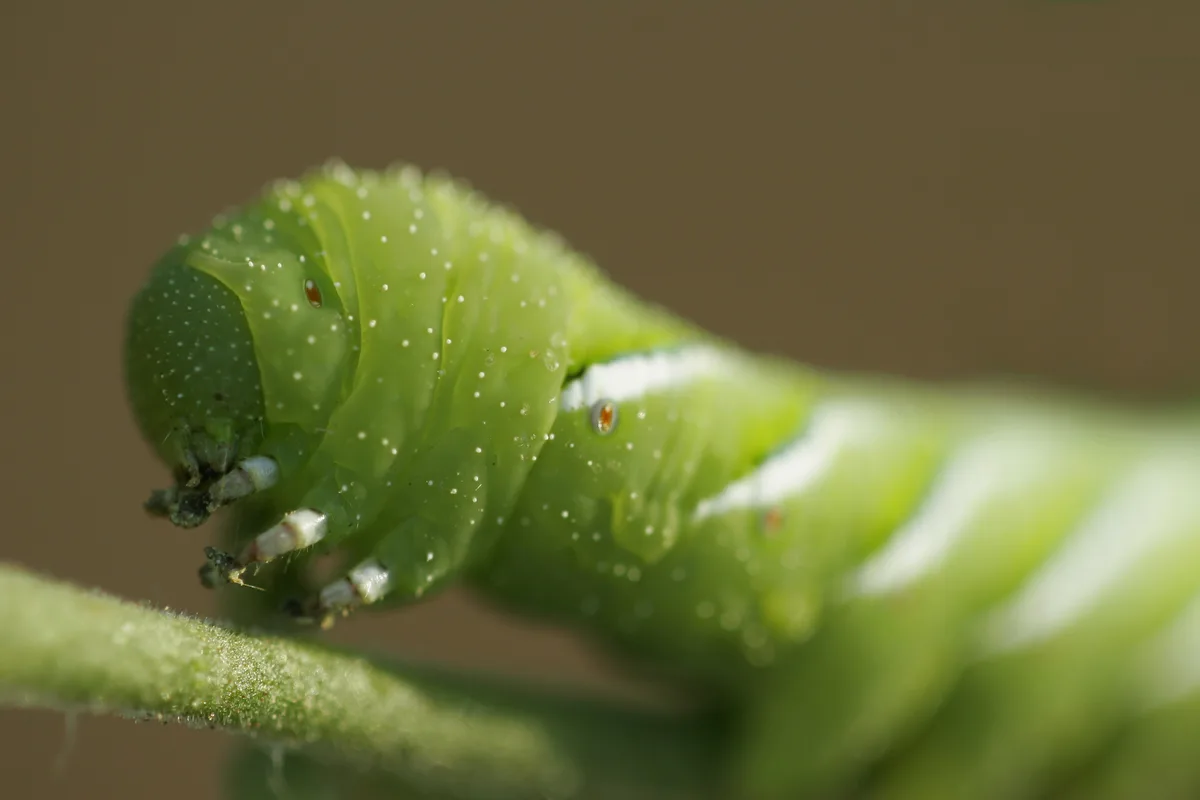
These green caterpillars can be identified by eight white horizontal V-shapes that run up the sides of their bodies, each with a black eye next to the V-angle. They also have a black horn protruding from the back end.
Tomato hornworms (Manduca quinquemaculata) are big, visible, and known for feeding on the top leaves of the plant first. They hide under the leaves during the day and feed at night, stripping the leaves off the stems. This leaves them bare by morning or at minimum, very chewed.
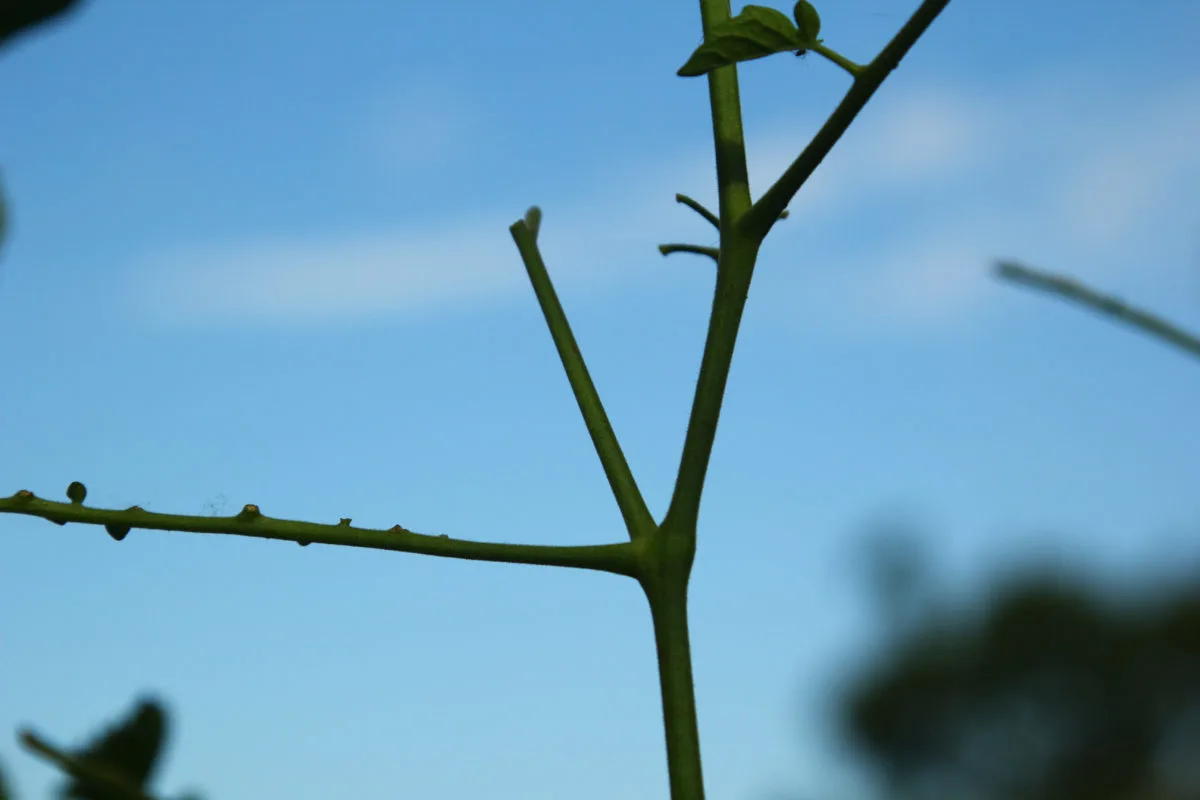
They also leave black balls of frass on the foliage – a sign to check under the leaves for the green monsters. By the time they are fully matured, they can be 4 – 5 inches long. They also feed on other plants in the nightshade family like potatoes, eggplants, peppers and tobacco.
These caterpillars come from a variety of Hawk Moth, the Sphingidae family of moths also known as Sphinx Moths. The caterpillars of these moths are the hornworms. The tomato hornworm moth will lay eggs in late spring, hatching within a week. These caterpillars then eat voraciously for 4 – 6 weeks before cocooning.
The best method of control for these caterpillars is to hand pick them off the plants and drop them into soapy water or feed them to your chickens. They are not poisonous so can be picked with ease.
Invest in a really cheap black light flash light to easily spot hornworms on your plants.
Alternatively, use an organic pesticide that contains Bacillus thuringiensis or similar products specifically formulated for caterpillars. The pests have to ingest the substance for it to be effective. This stomach poison is dangerous to them but not to other beneficial insects or plants in the vicinity.
Use the specific instructions and apply again after rain to continue the control. Insecticidal soaps will also control tomato hornworm but only if they come in contact. Parasitic wasps will help keep populations down naturally by laying their eggs inside the hornworm. As they hatch, the larvae will eat the hornworm from the inside and spin the white cocoons shown below.
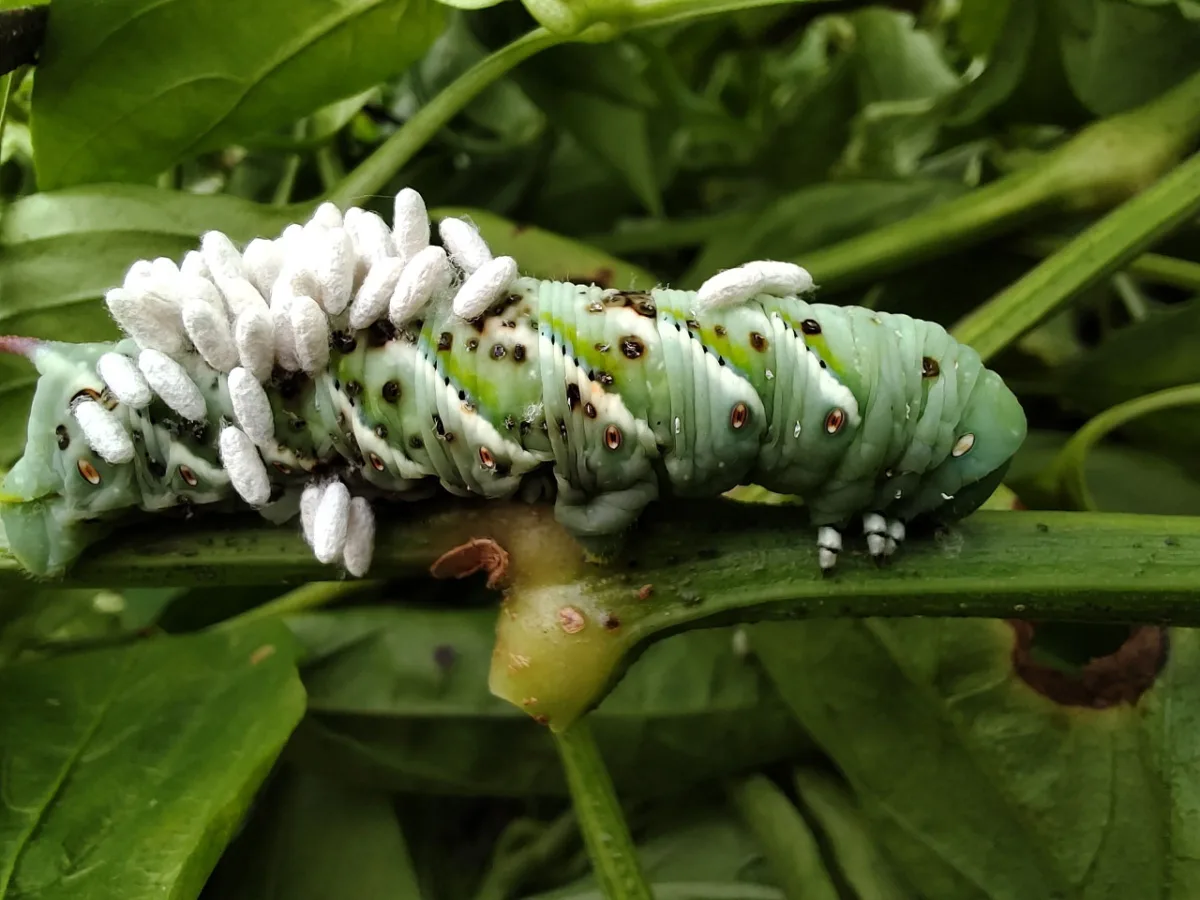
Read Next: Tomato Hornworms: How To Control & Prevent This Destructive Tomato Pest
2. Tobacco Hornworm
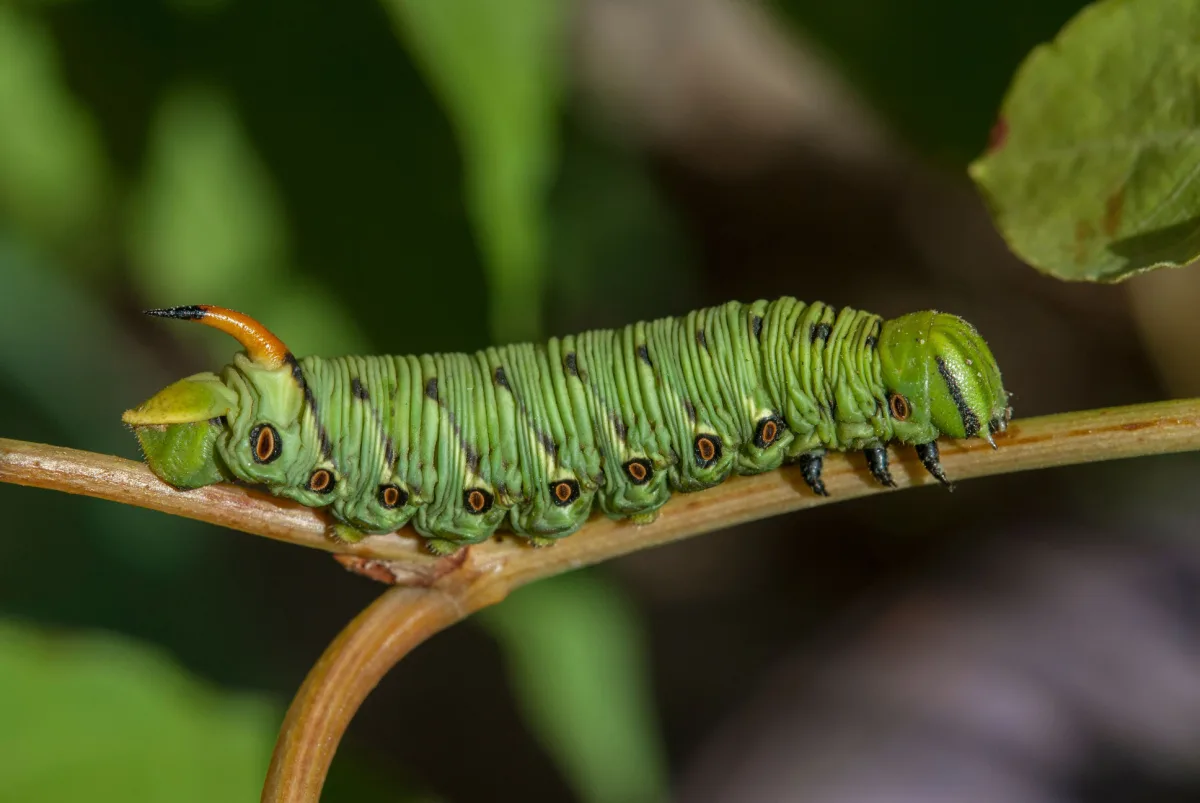
This caterpillar is also green like the tomato hornworm, but has a different white stripy pattern along the sides of the body. They usually have seven white stripes with black spots along the lines, black eyes next to the lines near the legs and a red horn at the back end.
Tobacco hornworm (Manduca sexta) also feeds on the nightshade range of plants including tobacco, tomatoes, potatoes, eggplants and peppers.
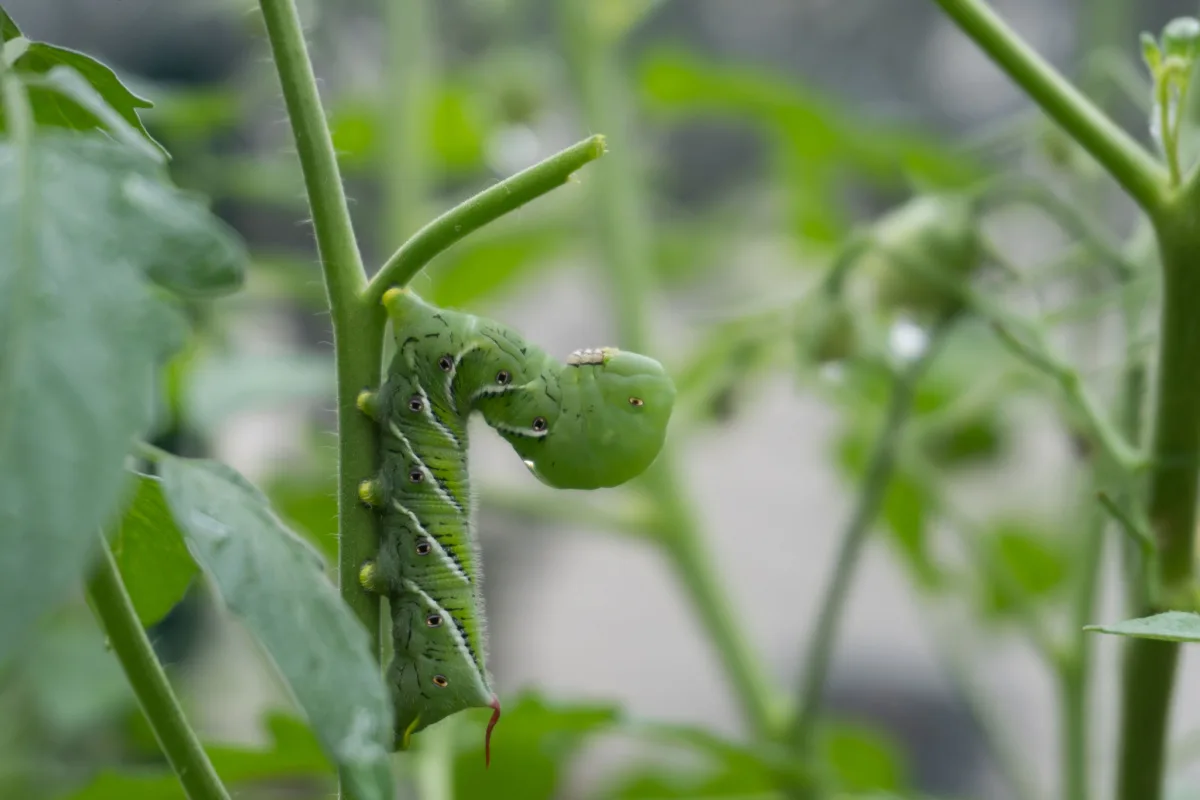
Other than different markings and the fact that the moth responsible for these caterpillars in the Carolina Sphinx Moth, they behave similarly to their cousins, tomato hornworm. They strip the leaves off stems at an alarming rate and will even damage green skin on tomatoes, inviting in other pests and diseases.
Use the same control methods as tomato hornworm to remove them from your plants.
3. Yellow-striped Armyworm
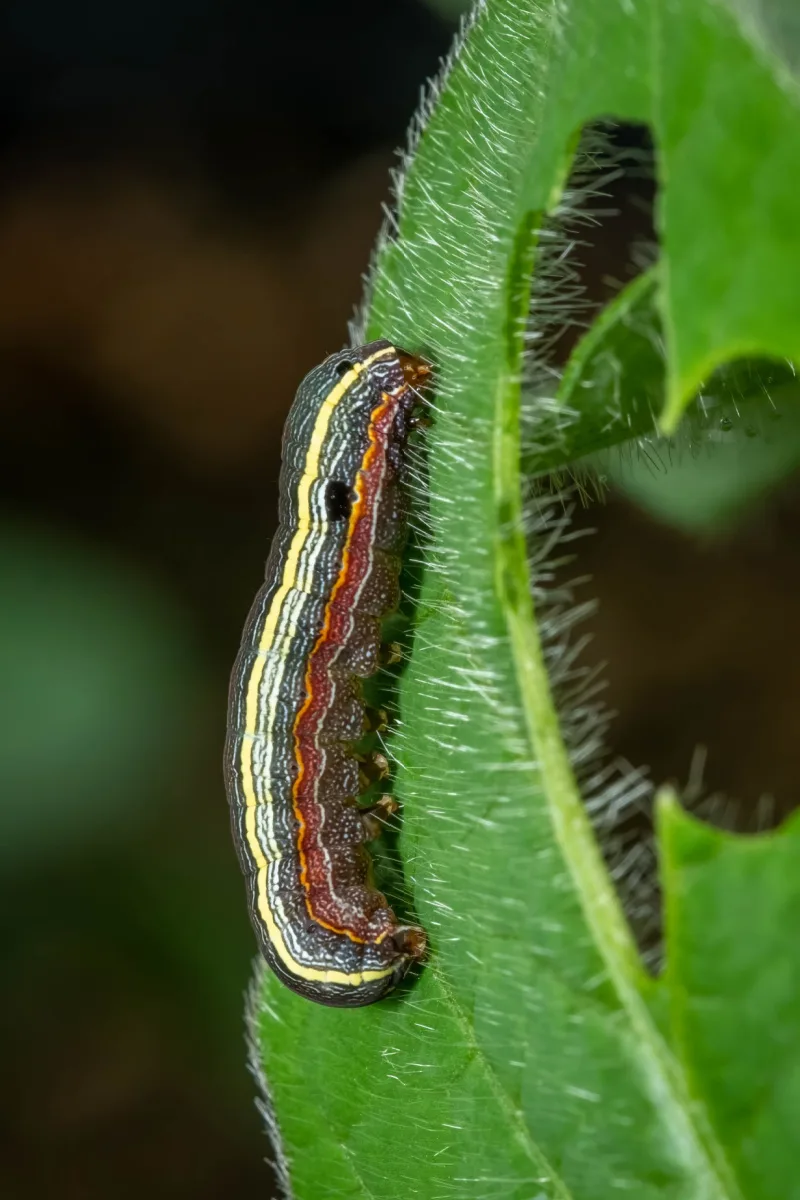
There are three common armyworm types that will attack tomato plants at night. The Yellow-striped Armyworm (Spodoptera ornithogalli) has a yellow stripe running along the sides – hence the name – with other brown stripes along a dark-colored body. They have a dark spot at the back of their bodies and an inverted V on their heads. They feed on a wide range of crops and ornamentals and mature to around 2 inches long.
Sometimes called owlet moths, these moths are from the Noctuidae family, one of the biggest in the moth world. In different regions, timing may vary, but they are usually active from the middle of spring to the end of autumn. Only winter is armyworm-free (unfortunately, when it’s not tomato season anyway).
These moths will lay 200-500 eggs at a time, hatching in only 3 – 5 days depending on the temperature. The name armyworm says it all when it comes to the level of destruction these caterpillars can make to a crop.
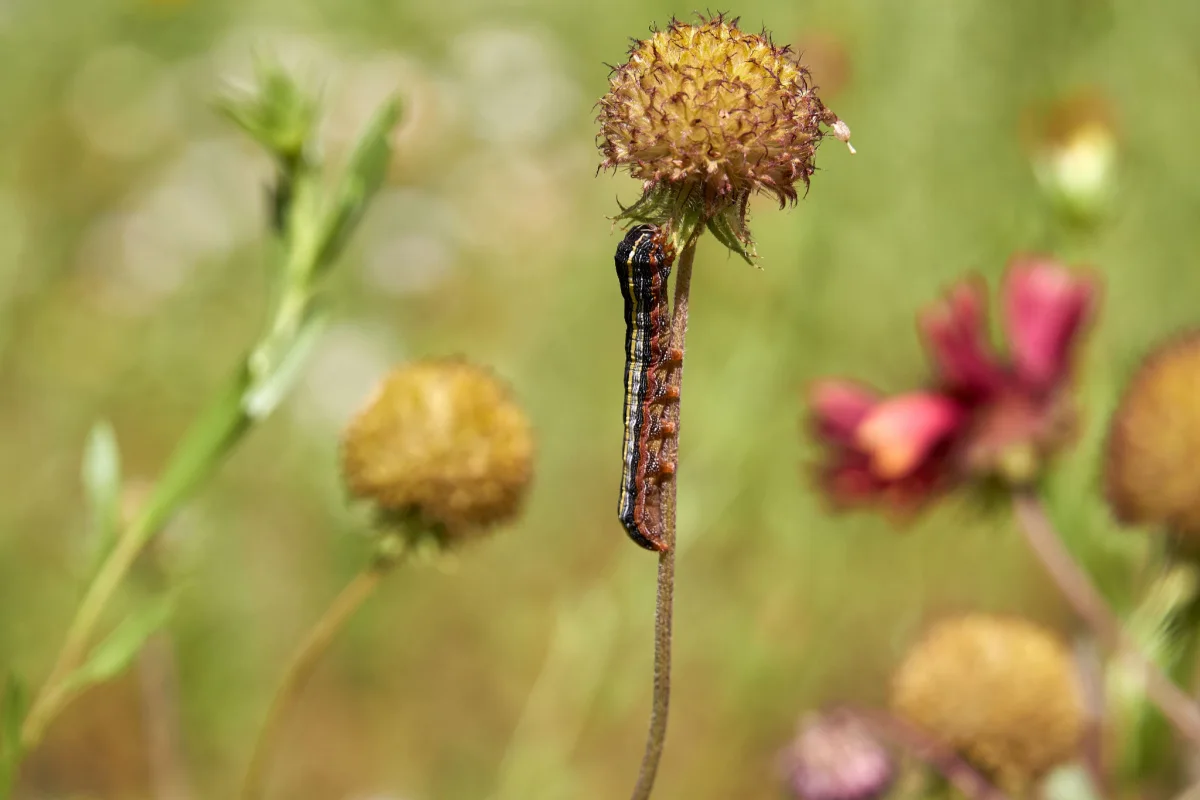
Often armyworms are found on host weeds in the area before migrating to food and ornamental crops. Once you have them, they will feed on foliage and damage tomato fruit quickly.
There are several natural predators for armyworms. However, because of their numbers, it’s often a losing battle to rely on them to control an infestation.
If you catch them when they are small, they can be controlled with an organic insecticide, preferably one that contains Bascullis thuringiensis that affects the stomach of the caterpillar and destroys it from within. Apply as the instructions suggest for the best results. Controlling nearby weeds may also help with infestations.
4. Beet Armyworms
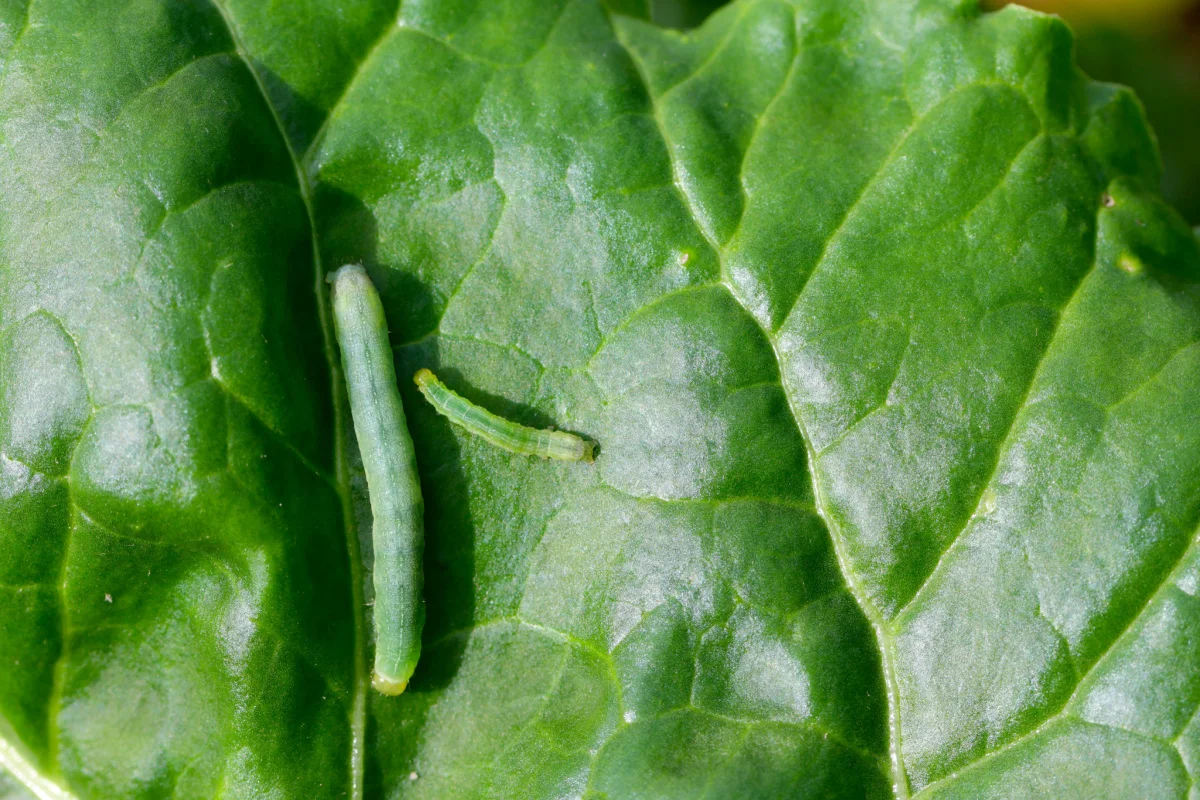
Later in the tomato growing season, you may find these little critters feeding on the leaves and fruit of tomatoes.
Beet armyworms (Spodoptera exigua) are named due to their prevalence on beets, but they can also attack other plants like asparagus, broccoli, cabbage, potatoes and corn to name just a few. They are pale green to yellow in color with stripes along the body and sometimes dark dashes at intervals along the sides. They grow to just under an inch long.
The moth is called the Small Mottled Willow Moth and they lay eggs in numbers on the leaves. When the caterpillars hatch, especially early in the growing season of tomatoes, they can destroy many plants with ease. They are known to attack buds and new growth and they leave strands of silk as they move from one plant to another. They are very active at night.
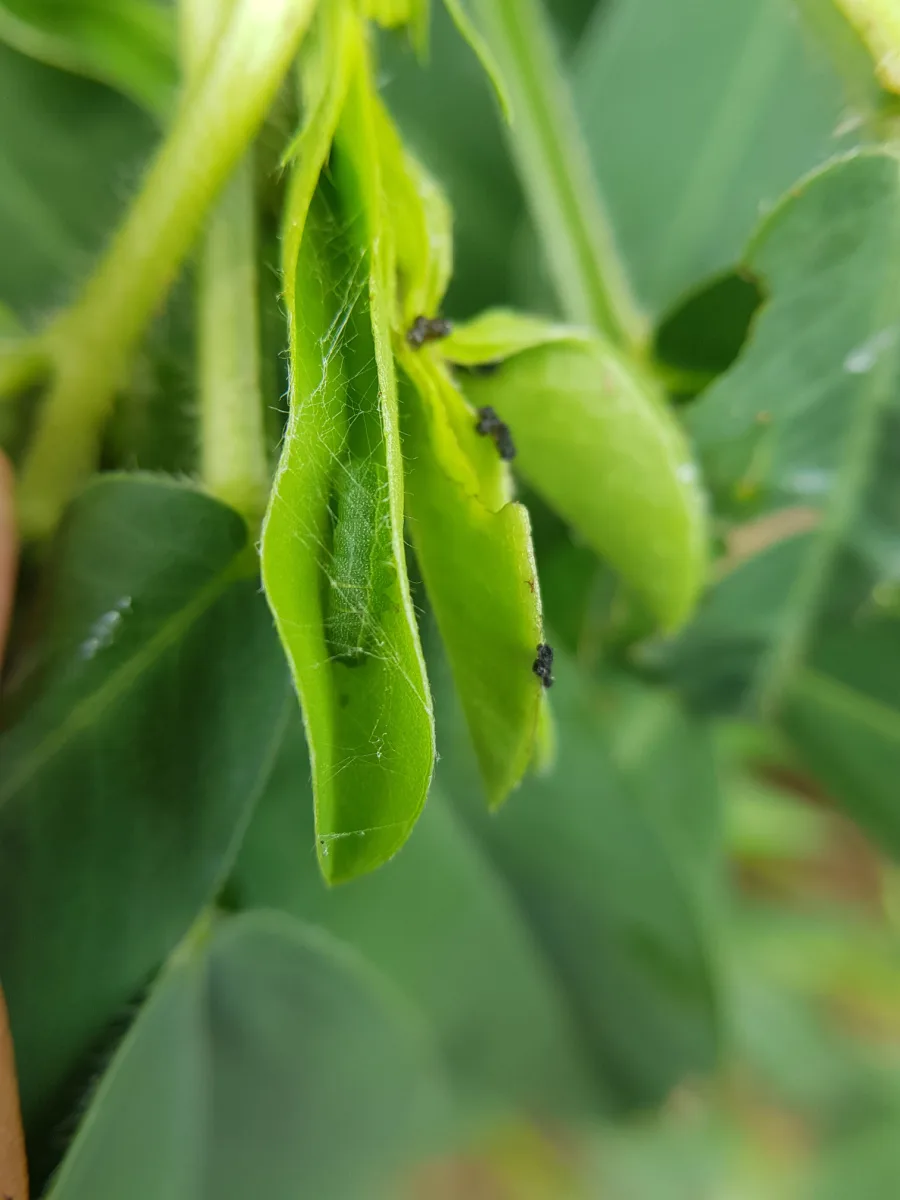
To control these caterpillars, check plants for damage early in the growing season and prevent using pheromone traps or picking them off manually and dropping them into soapy water to kill them.
Although there are many natural predators around, the sheer number may force the use of biological controls or chemical pesticides of which there are many to choose from. Neem oils have been found to be effective as well.
Make sure to read the instructions and follow them exactly. Follow-up treatments may be needed to get the pests under control.
5. Fall Armyworms
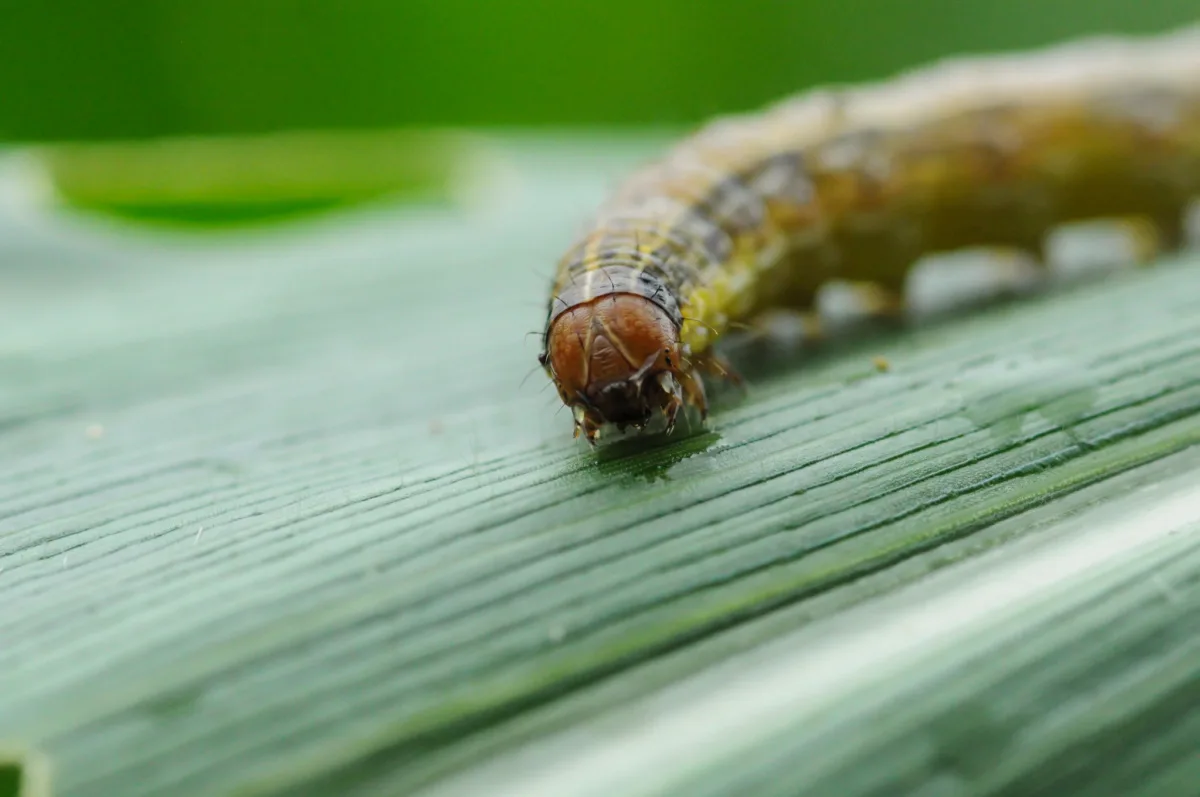
Unlike the other types of armyworms that attack tomatoes, the fall armyworm (Spodoptera frugiperda) is active at a different time of the year – from the end of summer into fall. In warmer areas, that may even be active all year including through winter.
A female moth of this type can lay over 2000 eggs. In a few days, the larvae will appear and begin to feed on several hundred different food crops and other ornamentals.
They are striped in various shades of browns and sometimes greens and yellows. As they mature white lines will begin to form along the body and there is a light-colored inverted V on the head. They grow to about 1 – 1.5 inches long. These caterpillars can cause serious damage to fruit, causing it to rot and fall.
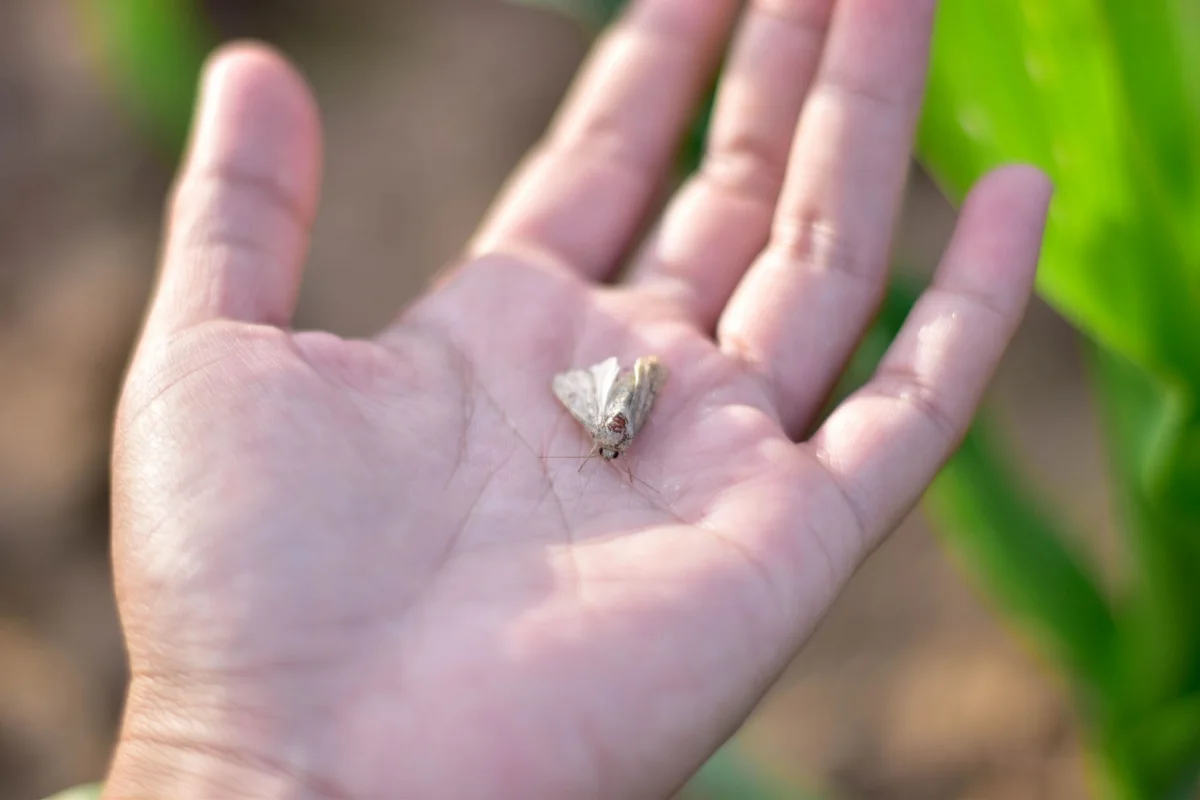
Pheromone traps are useful as moth traps and treatment with Bacillus thuringiensis is often helpful when the larvae first appear. Because these pests burrow deeply into plants, once they get older, they can only be controlled with insecticides formulated for the control of fall armyworms.
Follow any instructions exactly and make sure to do the follow-up to control.
6. Tomato Fruitworms
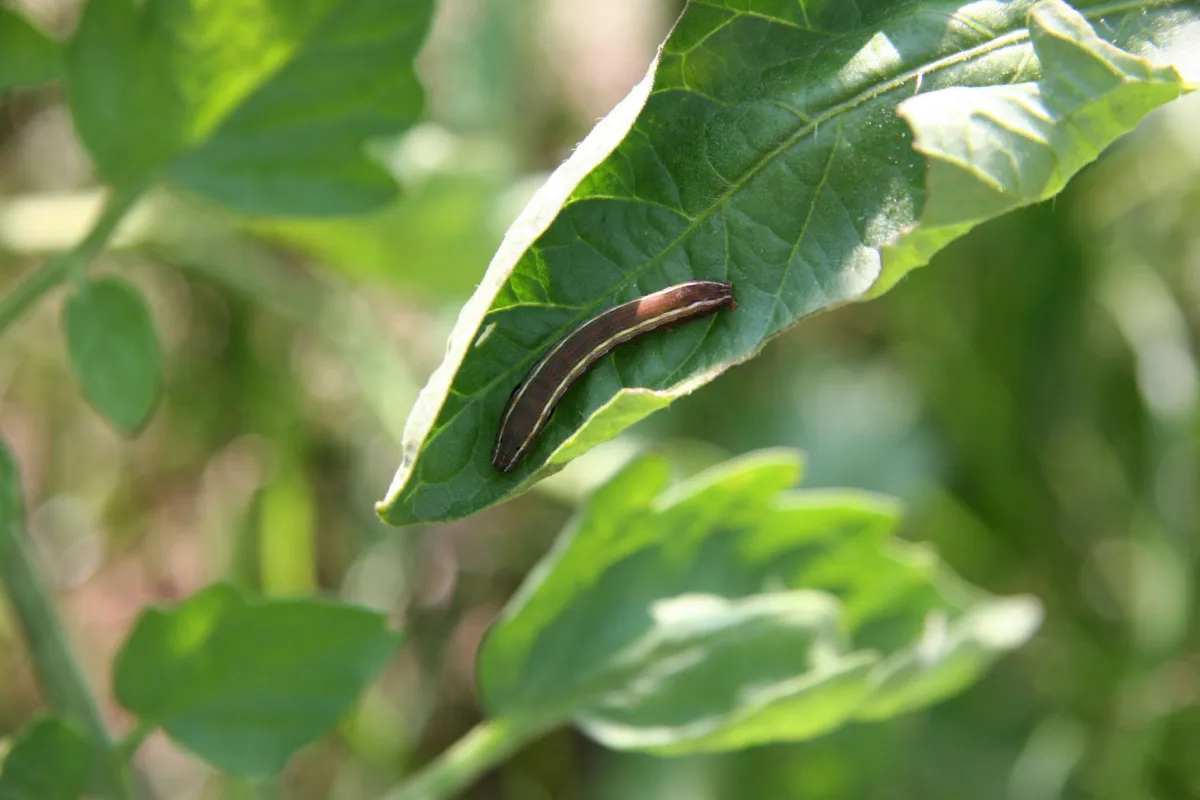
These fruitworms (Helicoverpa zea) are called tomato fruitworms when found on tomatoes and corn fruitworms when on corn, although they are also found on peppers and eggplants amongst others.
They are from the Noctuidae family which makes them nocturnal. As the name suggests, they are known for destroying developing fruits but they can feed on leaves and stems as well. They tunnel into fruits, making round holes and then deposit their droppings along the tunnel and exiting elsewhere.
Depending on what they are eating, they may be a different color and can be anything from brown, cream, yellow, black and grey with stripes down the sides. They are around 1.5 – 2 inches long and have hairy bodies.
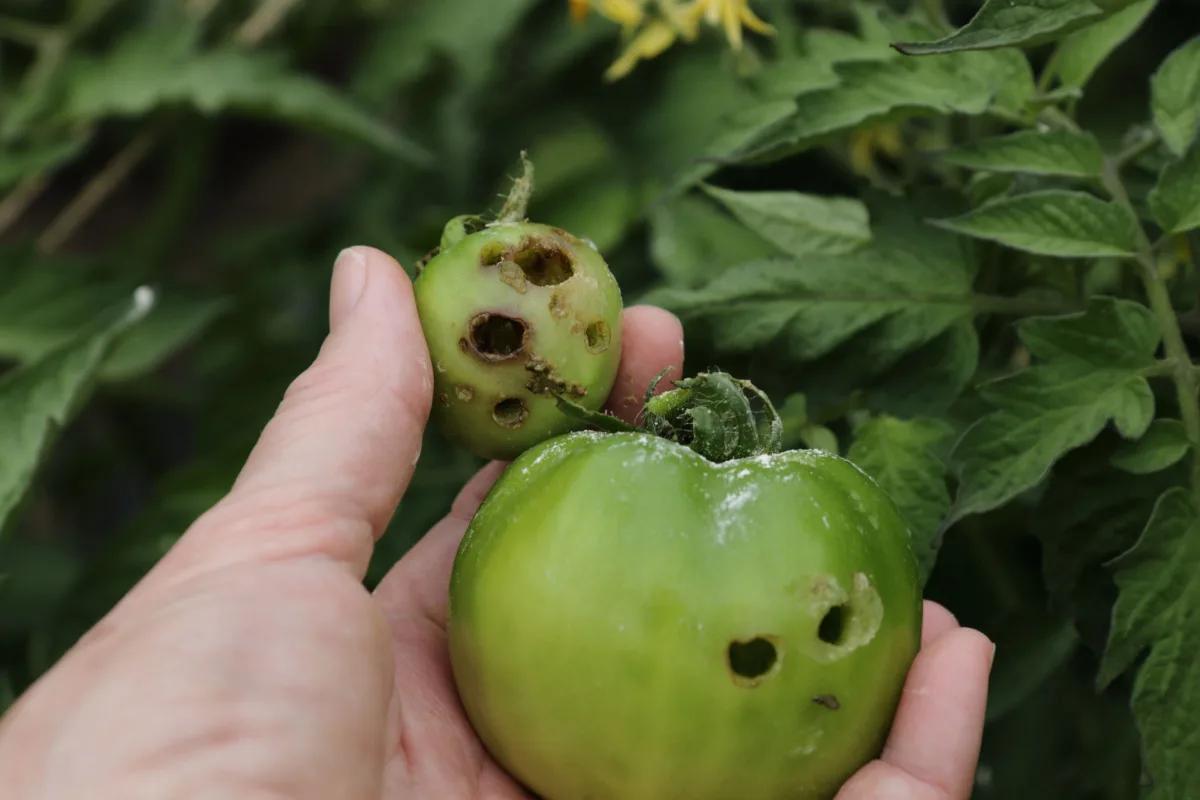
The moths will start laying eggs in spring. Within days, the caterpillars will begin feeding. They are also cannibalistic, feeding on other fruitworms that dare to find themselves in another’s prized tomato. They can also reproduce up to four generations in a single season.
The first control is to cut off any damaged fruits and destroy them with the caterpillars in them. Prune away any damaged leaves and stems. Other controls include using Bacillus thuringiensis or diatomaceous earth. Parasitic wasps may help control infestations.
7. Tomato Moth Caterpillar
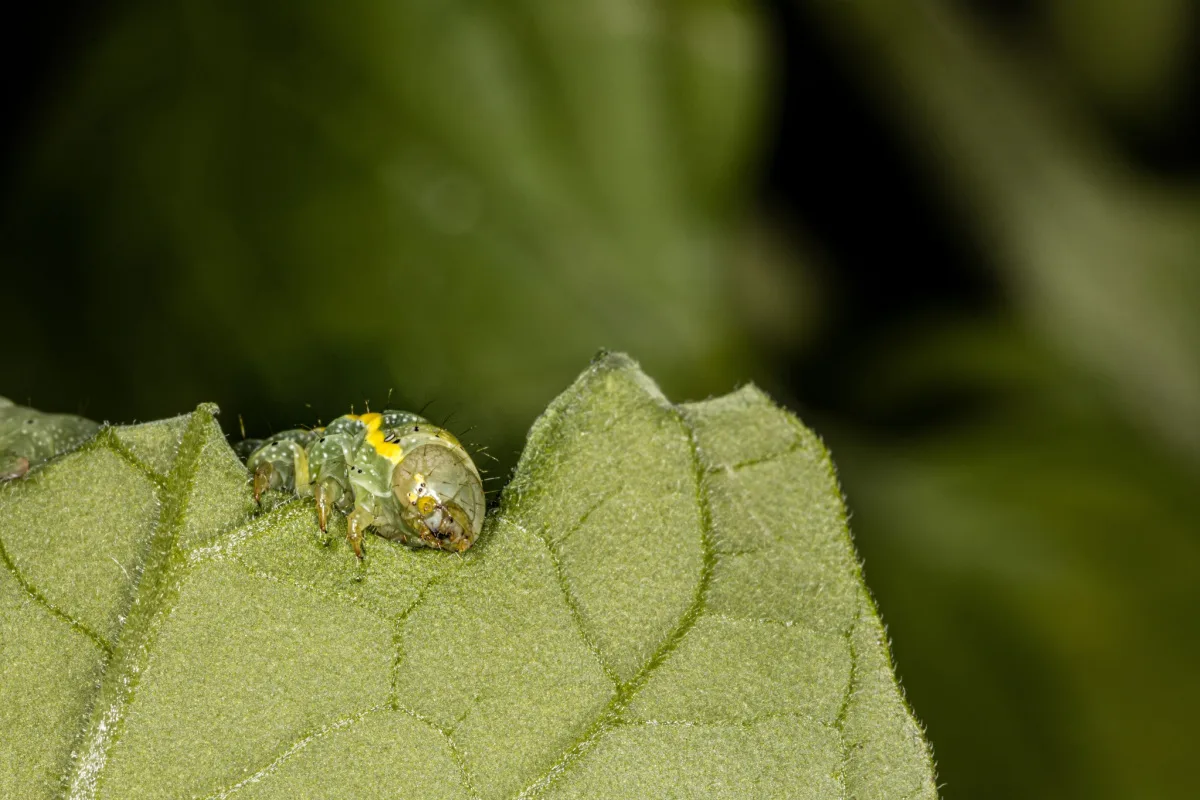
The tomato moth (Lacanobia oleracea) feeds on tomatoes and other crops like peppers, cabbages, broccoli, cucumbers and even apples.
Also known as Bright-line Brown-eye from the Noctuidae family, the moths lay up to 300 eggs on the underside of leaves. The caterpillars hatch within 7 days and will mature within 30 days.
They are more active in summer, but can be found later in the year as well, although usually not in winter. These bugs change colors as they grow, starting pale green, then mottled grey to brown and later forming a yellow stripe with black spots on the sides of the body.
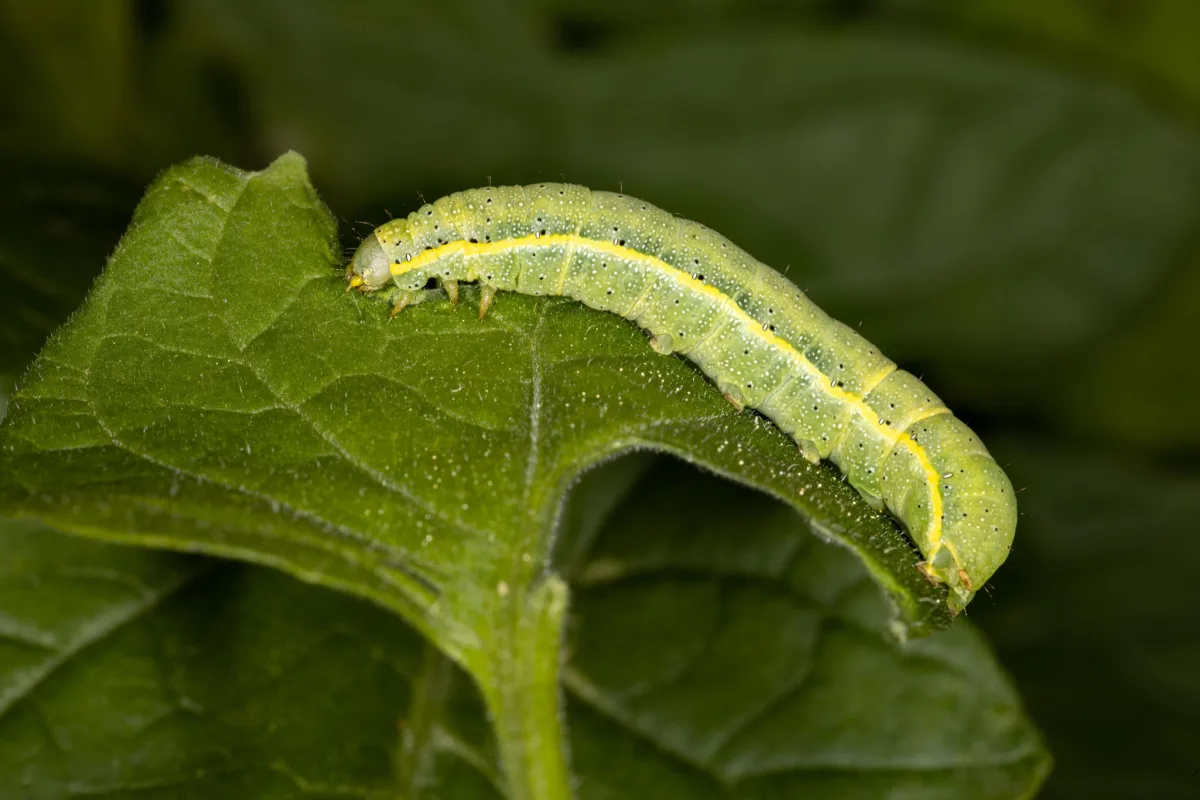
They start off eating through leaves and then burrowing into fruit destroying the fruits as they go. They are most active at night and are most often found in greenhouses.
Tomato moths can be picked off and dropped into soapy water to kill them off if you have a small number of plants. Otherwise, there are chemical and biological insecticides that target these pests.
Prevention
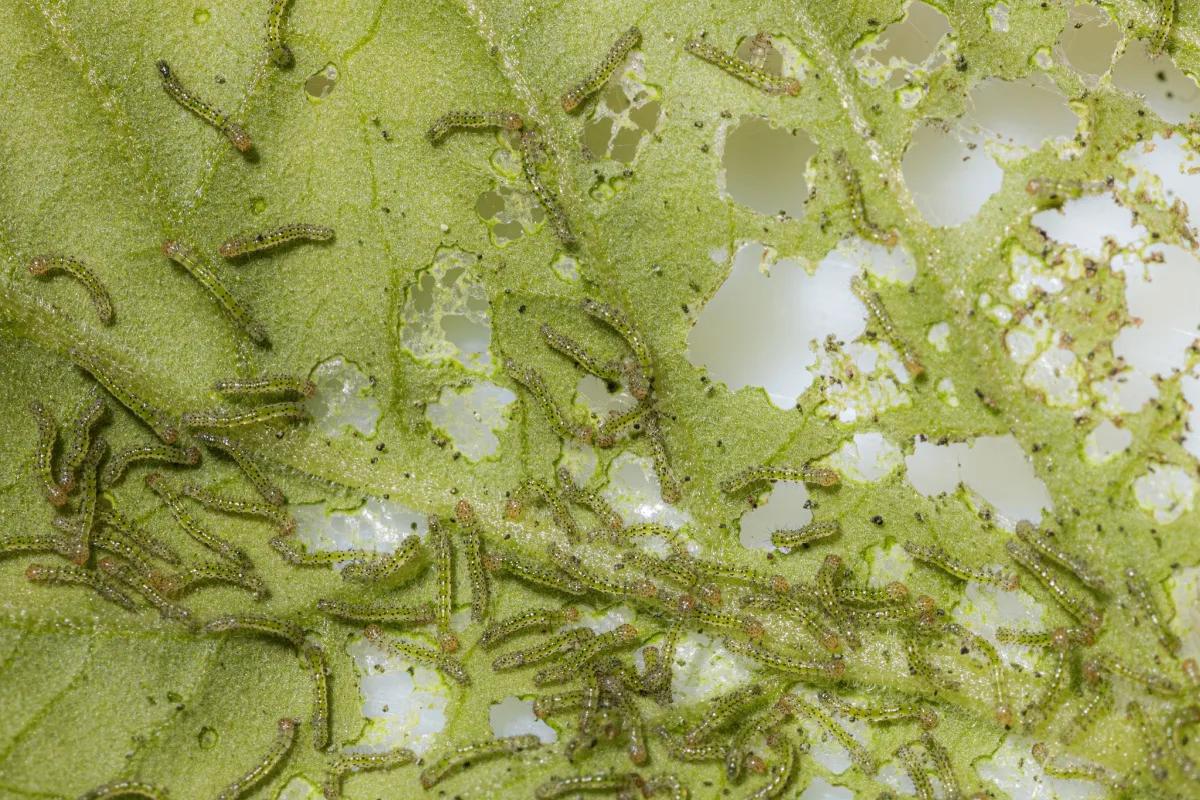
Prevention is better than cure when it comes to pests on your tomatoes.
The best gardening practices will help control insects and caterpillar infestations. By keeping your plants healthy, you avoid pests coming into the vegetable patch. Water correctly, give plants enough sun, feed plants regularly and feed the soil.
There are new biocontrol products that also help prevent pests and disease when planting and through regular applications. Some of these natural products will make roots stronger and plants healthier.
Plant basil between your tomato plants to repel insects. Also plant parsley, chives, garlic, marigolds and nasturtiums. By adding some good pollinator-attracting plants, you are also attracting beneficial bugs that also help keep the pest population at bay.
Related Reading: 8 Best Tomato Companion Plants – Increase Yield, Reduce Pests
